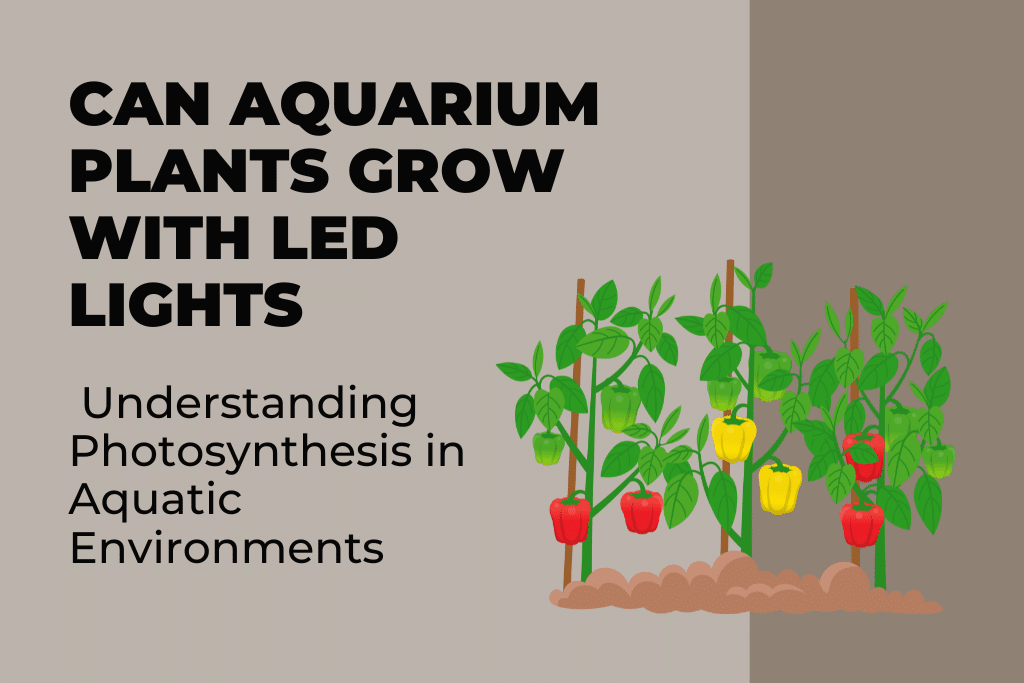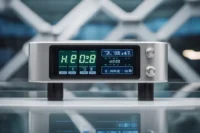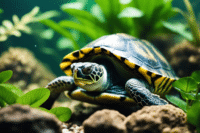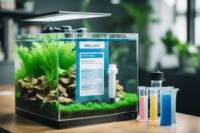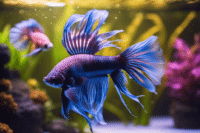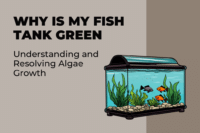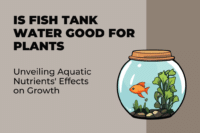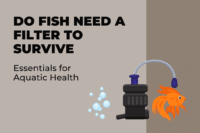Aquarium enthusiasts frequently look for ways to promote healthy plant growth within aquatic environments, with LED lights being one such solution. LEDs do indeed support plant growth in aquariums as this lighting technology has evolved so as to address all species with varied light needs – providing spectrum and intensity levels needed for photosynthesis, and helping the aquatic environment support plant life flourishing underwater.
Setting up lighting for an aquarium, it is critical that one understands its plant’s lighting requirements. These vary based on type and depth of aquarium. LED lights offer an energy-saving solution which meets these demands while simultaneously improving aesthetic appeal of aquarium. Proper setup and maintenance is vitally important if we hope for optimal plant growth!
Key Takeaways
- LED lights can support aquarium plant growth through specific spectrum and intensity lighting solutions.
- Selecting and setting up an appropriate LED system are integral for their wellbeing and development of aquatic vegetation.
- Regular maintenance of LED lighting for aquarium plants will promote optimal photosynthesis and growth, including reduced light pollution in the environment.
- Here’s more information on its many benefits for aquatic environments:
The Benefits Of LED Lighting For Aquarium Plants
LED lighting can transform aquarium landscaping by offering an effective spectrum that promotes plant vitality, energy savings and longevity.
Enhance Plant Growth
LED aquarium lights provide the full spectrum of lighting essential for photosynthesis of aquatic plants, with many specific wavelengths optimized to promote plant growth while suppressing algal proliferation. Lights like Finnex Planted+ 24/7 ALC even enable customization that mimics sunrise to sunset cycles for enhanced plant health and development.
Energy Efficiency
Aquarium owners can take advantage of LED technology’s energy-saving properties when selecting LED lights for their aquarium, which have proven themselves more cost effective compared to fluorescent or incandescent bulbs in terms of electricity use and excess heat reduction – two qualities essential in providing healthy conditions in tanks for plant health and fish comfort.
Longevity And Durability LEDs boast impressive lifespans; some LED systems can last as many as 50,000 hours with minimal replacement costs or maintenance required by users. Furthermore, due to being solid-state components resistant to shaking or impact, these lights make an excellent addition for aquarium hobbyists as an aquarium hobbyist would appreciate this quality in lighting systems such as Fluval Plant Spectrum 3.0 LED which offer both durability and high performance when growing aquatic plant cultivation.
Understanding Photosynthesis In Aquarium Plants (The Basics)
Aquarium plants rely on light to perform photosynthesis, the process by which light energy is converted to chemical energy. In this section we’ll look at how light spectrum impacts photosynthesis for aquatic plants as well as PAR and PUR values that influence them.
Light Spectrum The light spectrum encompasses various wavelengths that each have their own effects on photosynthesis. Aquatic plants requiring photosynthesis depend on blue and red portions of the spectrum for maximum effectiveness: blue light between 400-500 nanometers affects leaf shape and chlorophyll production while red light from 600-700 nanometers drives flowering, stem lengthening and root development.
PAR and PUR Values
Photosynthetic Active Radiation (PAR) measures the light intensity that plants can use for photosynthesis, typically between 400 to 700 nanometers in wavelength range. Not all PAR is equally useful to photosynthesis – for this reason Photosynthetically Usable Radiation (PUR) becomes key as this metric takes into account how efficiently plants utilize various wavelengths within this PAR range; LED lights can often be designed with emitters that meet this PUR requirement, making them great for aquarium settings where photosynthesis must take place!
As part of an aquarium’s overall care, when selecting LED lights it is crucial that both their emission covers all wavelengths necessary for photosynthesis as well as falls within its PAR range – this ensures plant health is preserved.
Selecting The Appropriate LED Aquarium Lights
Selecting LED lighting that supports aquatic plant health and growth is vitally important. Not only can quality illumination impact plant vitality but it can also enhance the aesthetic appeal of an aquarium display.
Variety Of LED Fixtures
There are various kinds of LED fixtures designed for different aquariums and plants, each designed with specific purposes in mind. Full spectrum lights are an extremely popular choice as they mimic natural lighting while supporting plant growth of various varieties. Red lighting promotes healthy stem development while blue wavelengths aid photosynthesis – different fixtures emphasize one over another for optimal plant development.
Consider Tank Size And Plant Species When Making Decisions About Aquarium Designs.
When selecting LED lights for aquariums or plant species, both tank size and species need to be taken into consideration. Larger tanks need fixtures with higher output so the light reaches all corners; plants often have specific light needs which correspond with their natural environments – for instance aquatic species from shallow waters may require LEDs with higher Kelvin ratings indicating cooler color temperatures that simulate sunlight.
Adjust the Intensity And Color Temperature Of Any LED Strip Light Easily
LED lights with customizable intensity and color temperature allow for customization to suit various stages of plant development. An adjustable fixture offers flexible illumination from 6,500 kelvins up to 10,000 kelvins – ideal for creating the conditions necessary to promote photosynthesis while encouraging pigmentation production; ultimately improving your aquatic garden’s aesthetic appeal.
Installation And Care For Aquarium LED Lights
LED aquarium lights play an essential role in supporting plant health and growth in aquarium environments, offering both energy efficiency and long-term value; their performance depends heavily on how they’re installed and cared for.
Position and Spread For Maximum Results
Installing LED aquarium lights correctly requires making certain they provide even illumination across the entirety of the tank, from corner to corner and depth-wise. Mounted at an appropriate height will help maximize light coverage which in turn facilitates plant growth. In deep tanks more powerful lights may be required in order to penetrate depth more effectively and reach through.
Lighting for tanks under 12 inches deep: moderate-intensity lights should provide sufficient illumination. To reach the bottom, higher intensity lighting may be needed to reach its full depth of 24 inches deep tanks. When setting timers with Timers for lights on and off periods, additional consideration must be made with scheduling them appropriately for optimal use.
Maintaining an aquarium requires setting timers to automate its lighting cycle; plants need periods of darkness in which to recharge themselves, so establishing consistent light schedules that mimic natural conditions and reduce algal growth is of utmost importance for optimal care and survival.
Daylight period: For most aquarium plants, 8 to 12 hours of light exposure each day should suffice.alitat Nighttime period: To simulate natural surroundings and provide restful environments for them to rest and heal themselves naturally.
By following specific protocols for placement, spread, and timing lighting, aquarists can ensure they maintain a vibrant aquatic ecosystem.
Common Questions and Considerations (CFICs)
Aquarists encounter many questions when cultivating an underwater garden, with regards to maintaining an eco-system thriving for both fish and plants alike. Key considerations involve managing algae growth while assuring both populations’ wellbeing through selecting lighting accordingly.
Dealing With Algae
Algae can be both an annoying nuisance and an undermining force in aquarium plant health, necessitating immediate action to combat it. When combatting it, lighting must be considered carefully: algae thrive in high light levels when nutrients and CO2 levels become imbalanced, leading to excessive algae growth. To mitigate this issue one may use lights which have specific spectrum and intensity settings tailored towards supporting plant growth without inciting excessive algae development; using timers on each light exposure session can also prevent this problem from taking over an aquarium environment
Balancing Plant Needs With Fish Comfort
Balance between plant and fish needs is integral to creating an aquarium environment conducive to health; both depend on suitable environmental conditions to thrive.
Intensity of Lighting: Too much brightness can disturb fish while too little can impede plant growth. Spectrum of Light: Full spectrum LED lights should promote plant growth; however, to minimize stress to fish it must have the ideal color temperature to provide maximum growth potential for maximum benefits.
Heat Emitted by LED Lights: Light emitting LED lamps can help minimize temperature changes that stress fish.
Aquarists must constantly keep an eye on their tank conditions, making adjustments as necessary and developing an approach that caters for both parties’ comfort.
